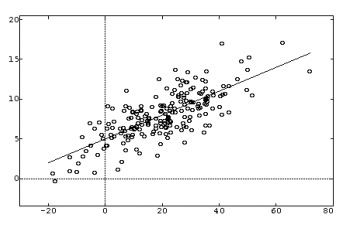- Air Homepage
- Alberta Air Quality
- How to Ensure Data Quality
How to Ensure Data Quality in Alberta's Air Quality Reporting system
Don't miss out on the opportunity to become a data quality champion. Get a look at the How to ensure Data Quality portion of the Alberta Monitoring Directive and take the first step toward making a real impact on our environment.
Monitoring and reporting air quality is more than following guidelines—it's about protecting our environment and communities. Cleaner, safer air starts with understanding and implementing Alberta's Air Monitoring Directive.
Precision and accuracy matter, and your commitment can make a big difference. Use this guide whenever you need inspiration or a refresher. Air quality is a step towards a better future.
Taking the Pulse of Air Quality
Passionate about the environment, curious about data quality, or eager to make a difference?
Here's your key to air quality monitoring precision. Here's some of what you'll learn:
- Maintaining data accuracy is an art and a science.
- Consistency in air quality monitoring.
- Tips for top-notch data comparability.
- An insider's guide to monitoring, reporting, and maintenance.
- Learn more about Alberta's Air Monitoring Directive
- Learn how to monitor air quality.
- Let's demystify industrial operations and airsheds.
- Understand the limitations of the Quality Assurance Program (QAP).
Section 1 - What a Quality System is for...
The Quality System Chapter is part of Alberta's Air Monitoring Directive (AMD), which provides guidelines for air quality monitoring. Chapter 5 lays out the requirements for implementing and maintaining a quality system. In addition to verifying the quality of air monitoring data, this system ensures consistency in air monitoring practices, ensures data comparability, and makes sure air monitoring, reporting, and maintenance are done well.
Including airsheds and industrial operations, this chapter outlines the requirements for air monitoring and reporting in Alberta. It provides info for people who do their own air monitoring and reporting and people who hire contractors to do it. If an industrial operation isn't required to monitor but must report emissions, they still have to have a Quality Assurance Program (QAP) with some limitations, as described in Section 6.2.
The Quality System Chapter doesn't cover Continuous Emission Monitoring Systems (CEMS). The CEMS Code details the specific requirements for CEMS monitoring.
Since June 2015, those responsible for air monitoring have been required to comply with the Quality System Chapter's requirements.
1.1 Of this document has been updated:
The document's design was updated in August 2016, so it has become more applicable. A change was made to the title page the following December, specifically referencing the 1989 Air Monitoring Directive. There may have been other clarifications or revisions in the latest update.
Section 2 - Overview of the Quality System
Sometimes companies need help with how to ensure data quality & using systems to guarantee the quality of their work, products, and services. Section 2 includes policies, goals, responsibilities, and ways to improve things. In addition to quality control and assurance, the quality system helps with planning, implementing, documenting, assessing, and improving an organization's work.
 Quite a System
Quite a SystemA comprehensive quality system must be created, applied, and maintained according to the AMD. Organizations should also have a QAP that explains their quality system.
Monitoring, reporting, and maintenance are all part of the system. QAPs show how the quality system works and how to make sure it meets AMD requirements. As a result, the organization can know and confirm the quality of its data.
The person in charge must prove that they have a consistent process or procedure in place so the people doing it know how to work with it and do so reliably.
As long as they meet the minimum requirements set out in this Quality System Chapter, organizations can customize their quality systems to fit the type, extent, and amount of monitoring and reporting they do. Each organization has its own processes, so there's no single template for a QAP.
Section 3 - Data, Document and Record Management
3.1 Document Control:
Document Control is about managing information in a specific format. As an example, a QAP outlines how processes work and what will be done in a quality system, either on paper or electronically.
To follow this rule (QS 3-A), the person in charge has to create, apply, and keep procedures for controlling all necessary documents in the quality system, whether they're internal or external. The documents should be easy to find, reviewed regularly (at least every three years), and updated when things change.
They also need procedures for creating and changing controlled documents. These documents have to be approved by authorized personnel chosen by the person in charge. You should be able to track what changes were made by keeping old versions for comparison or highlighting recent changes.
In QS 3-C, the person in charge has to share the Quality System Documentation with everyone who needs it.
According to QS 3-D, all air monitoring and reporting activities should follow the latest versions of important controlled documents.
3.2 Controlling records:
Keeping important information organized is all about control of documents. It's like an instruction manual for a quality system - it tells you how to do things. A QAP lays out how a system describing how to ensure data quality works, for example.
 An ancient way to log data
An ancient way to log dataAir monitoring records are like proof. Whether they're electronic or written, they help make sure the rules are followed. These records should be kept and protected by the responsible person, and they have to be available for inspection.
Records should be kept for at least three years. It's important to have a plan for what happens to the records if the person in charge changes or goes out of business. Computers and electronics have rules for protecting and keeping data. Errors in records should be corrected without hiding the originals.
3.3 Data control:
It's about making sure the information you report is accurate. Here's what you have to do:
To make sure the data reported to the regulator doesn't have any errors, the person in charge should create and follow clear steps and documented procedures. This means finding errors and fixing them before sending the data. It might be necessary to fix these errors with data treatment and implement special fixes.
Prove It's Right: The person in charge should also have documented procedures to prove any data treatments they use are valid. They have to prove that the way they're fixing the data is okay.
When there are no specific rules in AMD or other guidelines, the person in charge should have documented procedures for accepting or rejecting data in a way that makes sense for their operations. It's up to them to set their own criteria.
Keep records: The person in charge has to keep all the original data for three years. Keep copies of the final reports and data summaries for at least ten years. If anyone needs to check the data later, they'll have everything they need.
These rules make sure air quality data is accurate and reliable. The Ambient Data Quality Chapter of the AMD (Chapter 6) has more details on how to collect, verify, and validate this data.
Section 4 - How to Ensure Data Quality through Inspections and Audits
Audits and inspections are like check-ups for how to ensure data quality:
An audit is like someone checking to make sure the rules and guidelines are being followed. A boss does an internal audit to make sure they're following the rules, that their quality system is in place and working, that they're fixing things when needed, and how to ensure data quality. They have a schedule and procedure, and they need to do a full audit every three years.
An inspection occurs when you look at something (like equipment or processes) to see if it meets certain requirements. It involves measurements, tests, and observations to make sure everything is right. When you're just starting out or adding new things, you should do this more often, and when things have been going well a while, less often will likely be okay.
If something doesn't follow the rules during these checks, it's up to you to fix it, and the person in charge has to keep records of what they find and what they did. They also review the results after these checks to see if any other changes need to be made.
These inspections and audits are important to make sure everything is running smoothly, and they can be done by anyone in the organization or a third party.
Section 5 - Non-compliance, Prevention and Correction
Quality checks usually uncover non-compliance with AMD or quality system rules.
Corrections are quick fixes for specific problems. Adding more air to a tire if it's leaking air is an obvious example of a correction. It doesn't solve the root problem, which is the leak in the tire. Replacing or fixing the tire is corrective action, addressing the real problem.
Rules (QS 5-A) say the person in charge has to have procedures for dealing with non-compliance. It includes investigating any non-compliance, making immediate corrections, and figuring out why it happened, the root cause. In air monitoring and reporting, these procedures should be used whenever something doesn't follow the rules.
Also, there need to be procedures for both corrective and preventive actions (outlined in QS 5-B). As soon as the root cause is known, corrective action should start, and it should be appropriate for the severity of the problem. The Director should be notified, corrected data should be sent to the Regulator if possible, procedures should be updated if necessary, and they should check to see that the change worked.
Chapter 5 continues with detailed Responsibilities and Duties for maintaining data quality.
Find out how Calvin Consulting Group Ltd. can help you become a Data Quality Champion. To help you master precision in Air Quality Monitoring and Reporting, we offer expert guidance and audit services.
Make a real impact on our environment and safeguard your data. Get in touch with Barry today.

Learn how you can contribute to data quality and environmental preservation with the Alberta Monitoring Directive. We cover everything from helping you maintain data accuracy to ensuring compliance with regulations.
Unlocking the Power of Data Quality: Ensuring Precision in Air Quality Monitoring
Discover how Alberta's Quality System Chapter safeguards data accuracy, consistency, and quality in air quality monitoring.
Discover how data quality can shape our world. Grab your copy of Alberta Monitoring Directive Chapter 5 here, and become a true master of air quality monitoring! 🌍
Do you have concerns about air pollution in your area??
Perhaps modelling air pollution will provide the answers to your question.
That is what I do on a full-time basis. Find out if it is necessary for your project.
Have your Say...
on the StuffintheAir facebook page
Other topics listed in these guides:
The Stuff-in-the-Air Site Map
And,
Thank you to my research and writing assistants, ChatGPT and WordTune, as well as Wombo and others for the images.
GPT-4, OpenAI's large-scale language generation model (and others provided by Google and Meta), helped generate this text. As soon as draft language is generated, the author reviews, edits, and revises it to their own liking and is responsible for the content.




New! Comments
Do you like what you see here? Please let us know in the box below.